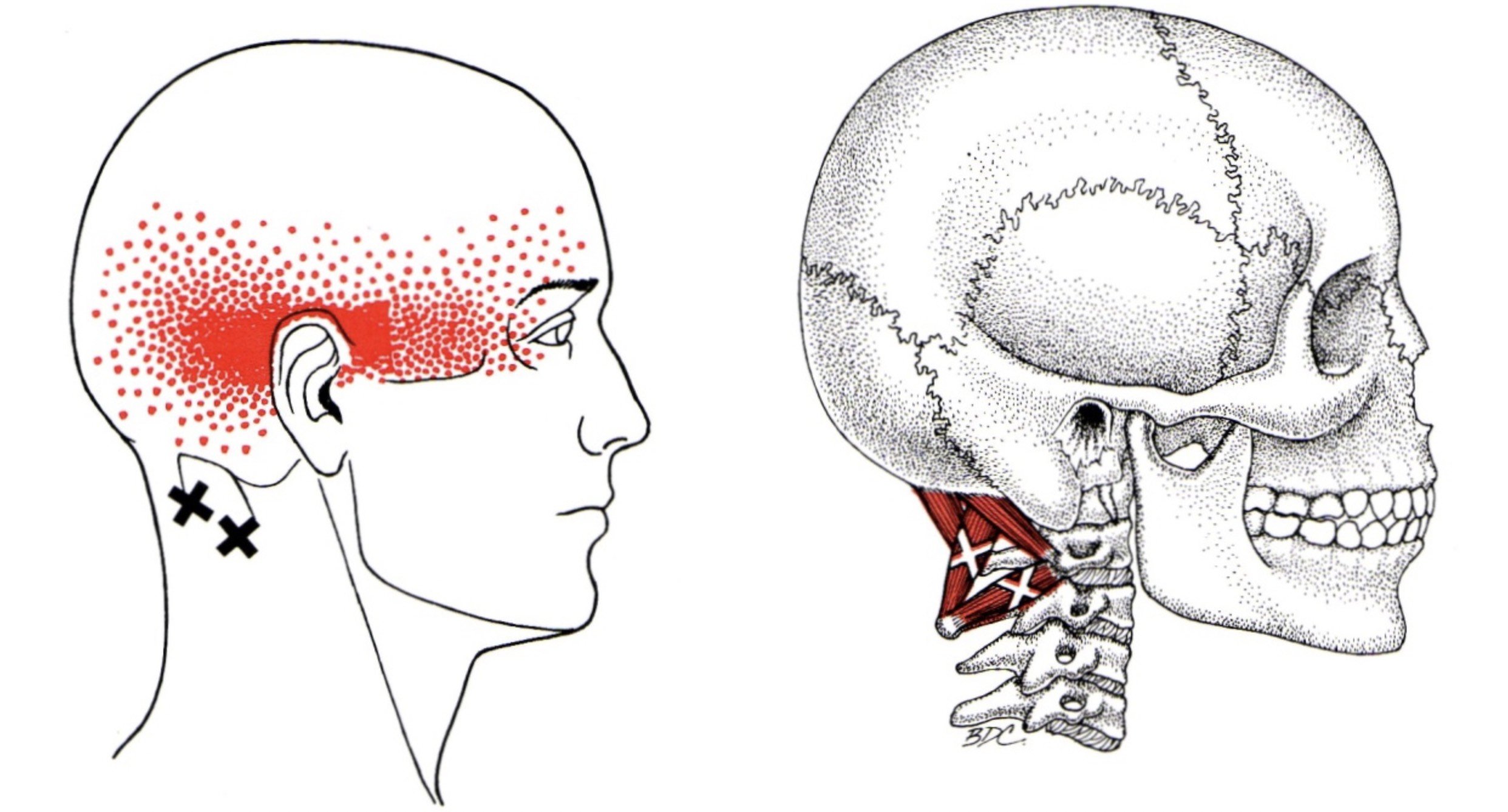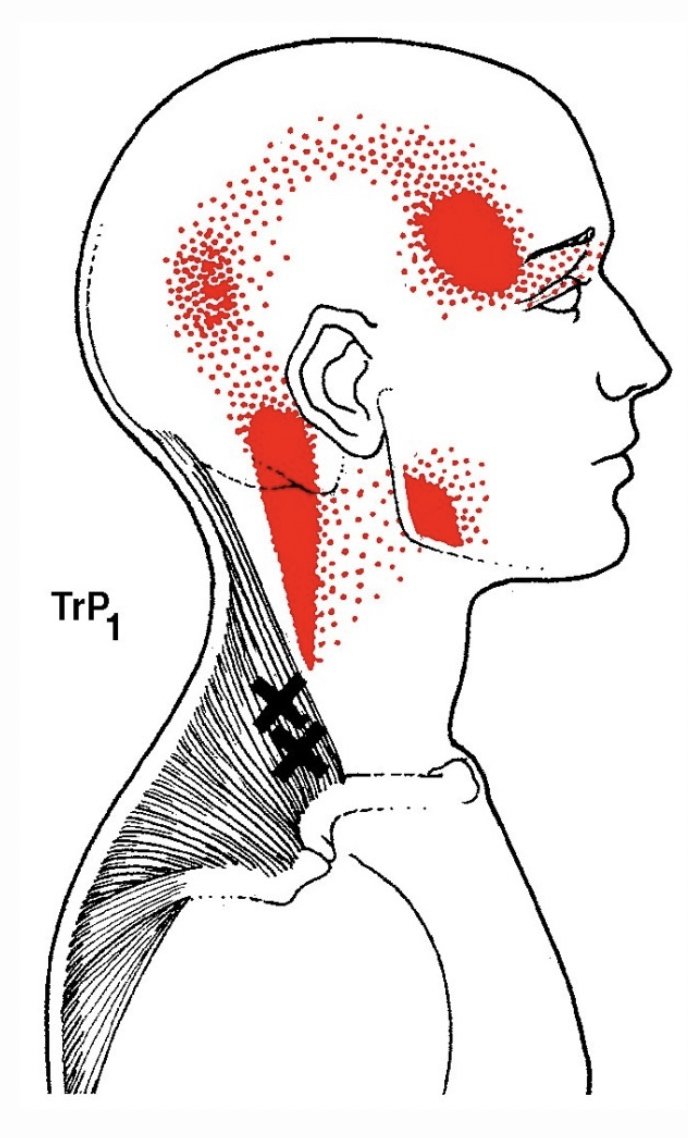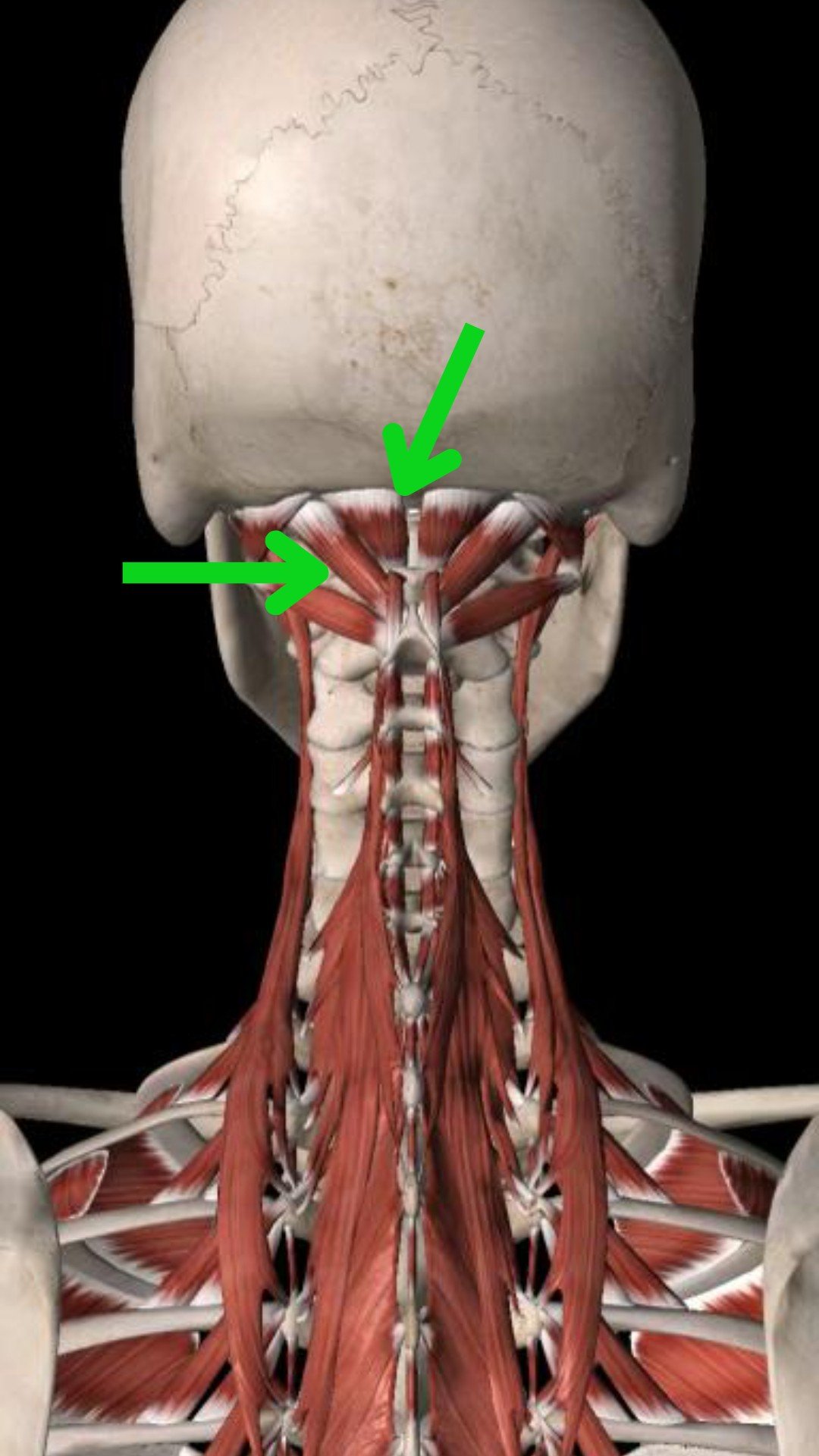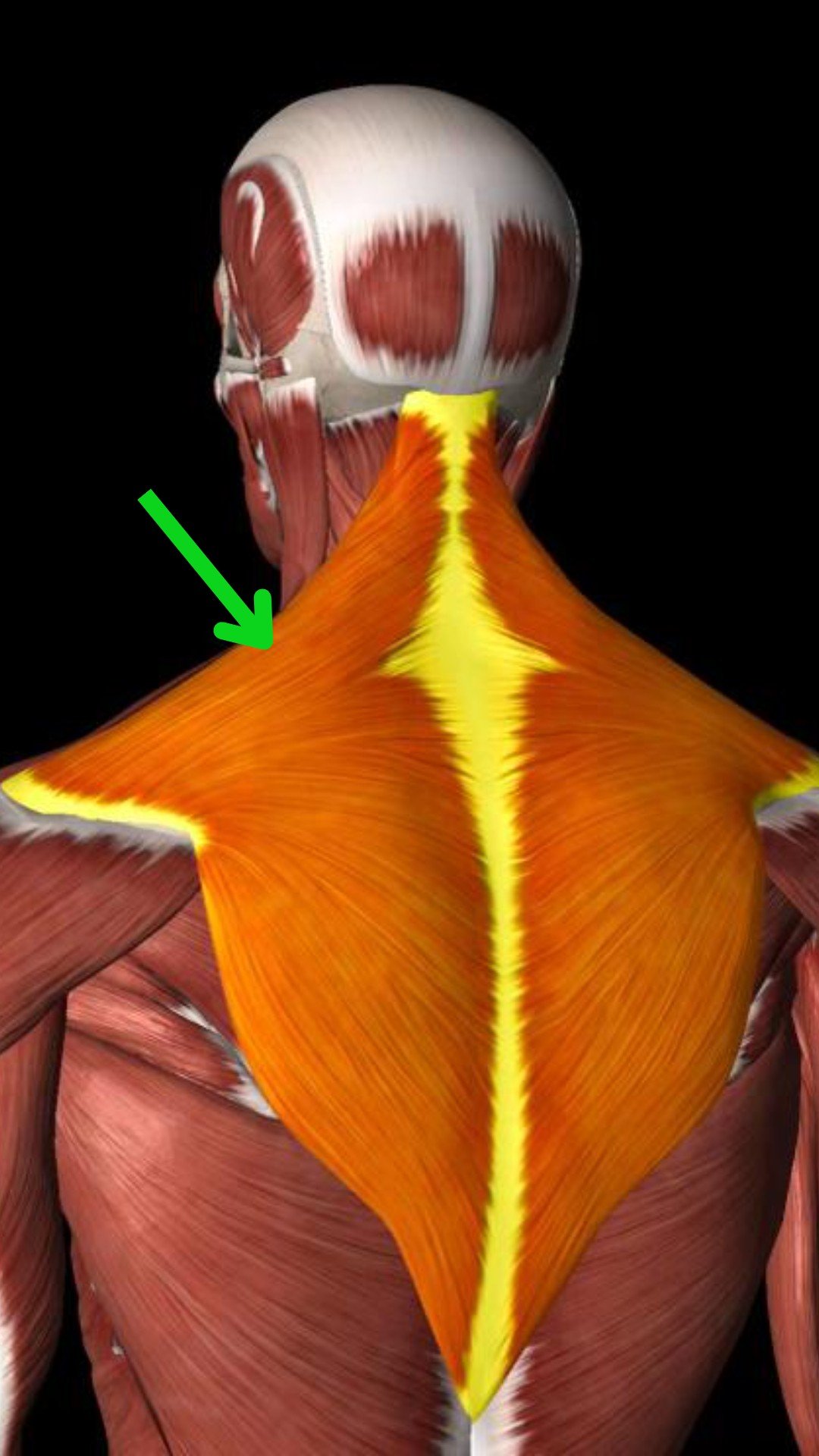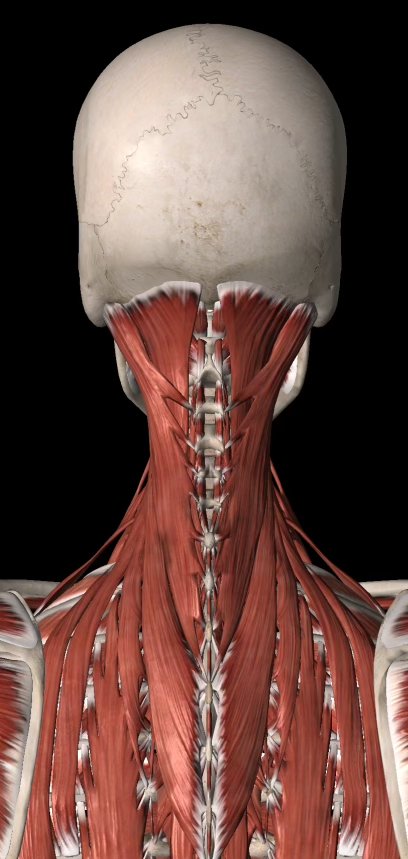Cervicogenic Headache Exercises
Physical Therapy for Cervicogenic Headache
What is a cervicogenic headache?
A cervicogenic headache is the type of headache that stems from the upper area of the cervical spine (neck). There can be involvement from the joints, discs, and/or muscles of the neck. These types of headaches are unilateral in nature (they present on one side of the body). They can be aggravated by neck movement and sustained postures.
Cervicogenic headache trigger points
Cervicogenic headache trigger points within some of the muscles around the neck have specific referral patterns. This helps us to determine if you truly have cervicogenic headaches, or another type of headache. Due to how close certain nerves are at the upper neck area, clients with cervicogenic headaches sometimes complain of symptoms such as ear fullness or jaw TMJ (jaw) pain.
Trigger Point Referral Patterns
What causes cervicogenic headaches?
Cervicogenic headache causes include sustained poor posture (especially posture related to ergonomics), stiffness of the upper cervical spine (C1 & C2 vertebrae), and decreased muscular strength/coordination/endurance of the neck muscles.
How do you diagnose cervicogenic headaches?
We diagnose clients with cervicogenic headaches based on the subjective history they provide to us, and the objective tests we perform to confirm the diagnosis.
Does heat help cervicogenic headaches?
The use of heat may help to transiently alleviate neck pain symptoms (if there is neck pain). Heat can help to relax some of your neck muscles, which can help with headache relief as well (if the muscles are the culprit in your case). If joint mobility restrictions or muscular endurance is the problem, then heat will not help. Ultimately, heat will not resolve your cervicogenic headaches long term. That will require hands-on manual therapy and proper neck exercise prescription by a skilled physical therapist.
Treatment for cervicogenic headaches
Best treatment for cervicogenic headaches will include both manual therapy and exercise, as supported by this research study.
We start our manual therapy with soft tissue mobilization (massage) on the tight muscles around the upper neck to break up rigid muscle tissue, relax muscle tension, and allow for better movement of fluids. The tight muscles that typically need to be targeted are the suboccipitals, upper trap, levator scapula, and cervical paraspinals.
Once we relax the tight muscles, we follow up with joint mobilization techniques to the upper neck segments to regain normal joint mobility. Our physical therapists specialize in these types of manual therapy techniques.
Once we improve the joint mobility of the upper cervical spine with manual therapy, we follow up with exercises for the neck and shoulder blade region to build flexibility, strength, endurance, and neuromuscular control in the new range of motion. This will help to maintain proper posture for longer periods of time and decrease the frequency of headaches.
Suboccipitals
Levator Scapula
Upper Trap
Cervical Paraspinals
Exercises for cervicogenic headaches
Chin Tucks (supine)
Chin Tuck with Rotation with Towel Overpressure
(Both Sides)
Prone A’s
Quadruped T
(Both Sides)
Cervicogenic headache stretches
Upper Trap Stretch
(Both Sides)
Levator Stretch
(Both Sides)
Chin Tuck with overpressure (seated)
Closing Remarks
If you are experiencing cervicogenic headaches and would like to work with us, contact us below to speak with a physical therapist.
Disclaimer: This is not intended to be formal medical advice. Your individual needs should be met by the appropriate health care practitioner. Please consult with a trusted provider.
Dr. Paul Nasri PT, DPT, OCS, COMT
Dr. Vincent Liu PT, DPT
Doctor of Physical Therapy
The Game Plan Physical Therapy

